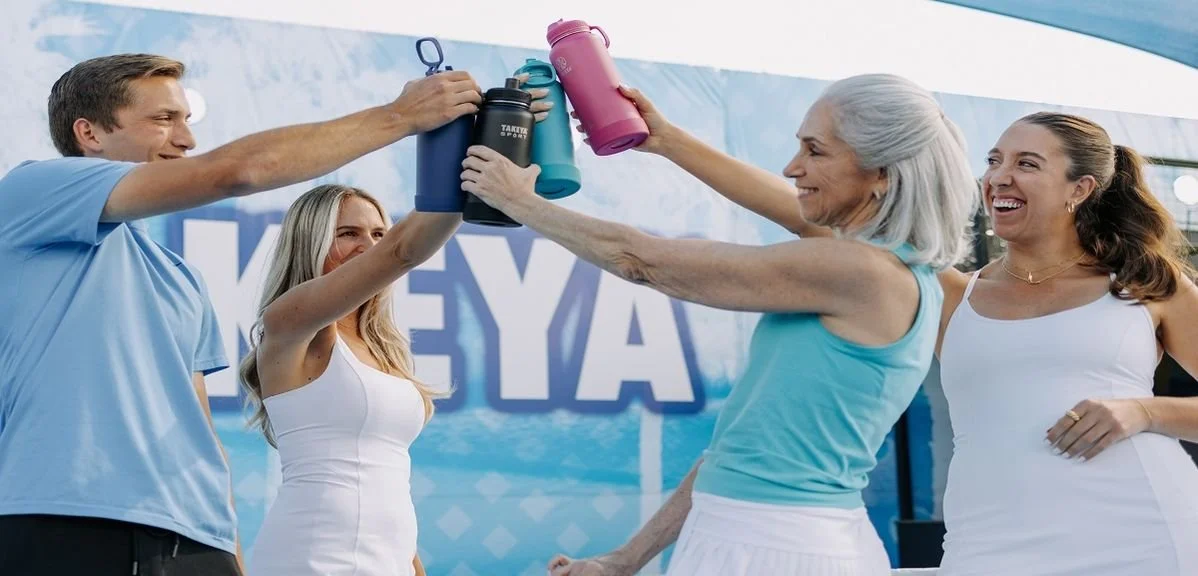Endurance Matters: How To Stay Energized In Long Matches
There’s a unique thrill to battling through a long, competitive pickleball match. The momentum swings, the mental chess, the final push to the finish line—it’s what makes the sport so addictive. But for many players, the toughest opponent isn’t the person across the net. It’s fatigue.
Staying energized through grueling three-setters and back-to-back games isn’t just about natural athleticism. It’s a skill—and like any skill, it can be developed. From physical conditioning to smart in-game habits, here’s how you can boost your endurance and stay sharp when it matters most.
Source: The Dink Pickleball
1. Start With Smart Fueling
Energy begins before you ever step on the court. Eating the right foods and hydrating properly in the hours leading up to your match can make a big difference in how long your legs—and your focus—last.
Aim for a balanced meal 2–3 hours before your match, something that includes complex carbs (like oats, rice, or sweet potatoes), lean protein, and healthy fats. Avoid sugar spikes from energy drinks or candy bars. They might give you a quick boost, but the crash will come just when you need energy the most.
Hydration is equally key. Start sipping water early, and don’t wait until you're thirsty to drink during the match. In hot or humid conditions, consider adding electrolytes to replenish what you’re sweating out.
2. Train Like It’s Game Day
Endurance isn’t built in the middle of a match—it’s built in training. If you want to stay energized for longer periods, your workouts need to simulate match conditions. That means doing more than just casual hitting or easy practice games.
Add interval training to your routine. Try sprint-recovery drills, court sprints, or agility circuits with minimal rest in between. Mix in longer rallies during practice to train your mind and body to stay locked in over time.
The goal? Get your body used to high-intensity bursts followed by quick resets—exactly like you’d experience in a real match.
3. Focus On Breathing And Recovery Between Points
Ever catch yourself holding your breath during a long rally? It’s more common than you think, and it drains your energy fast. Staying conscious of your breathing—especially during tense moments—can help regulate your heart rate and preserve energy.
Use the 10-15 seconds between points wisely. Breathe deep, reset your stance, and shake out any tension in your arms or legs. These tiny recovery windows add up over a match and can make a huge difference in your staying power.
4. Pace Yourself—Physically And Mentally
It’s tempting to go full throttle early in a match, especially if you’re playing well. But burning through your energy reserves too soon can cost you in the third set. Smart players learn to manage their physical output, knowing when to grind and when to glide.
Mental pacing is just as important. Pickleball can be emotionally draining—especially in close matches. Try to stay even-keeled. Celebrate good shots, but don’t get too high or too low. Emotional stability is a quiet form of endurance that keeps you focused when others start to unravel.
5. Use Smart In-Match Nutrition (If Needed)
For particularly long match days or tournaments with multiple games, having a small, easy-to-digest snack can help replenish energy between matches. Think a banana, a handful of almonds, or even a light protein bar.
Don’t overdo it, though—heavy food mid-match can slow you down. Keep it simple, and give your body a steady stream of fuel rather than one big hit.
Final Thoughts
Endurance is one of those traits that separates good pickleball players from great ones. The ability to dig deep in the final moments of a match is often what turns close losses into gritty wins.
And the best part? You don’t need to be a full-time athlete to build it. With smart habits, consistent training, and intentional match-day routines, anyone can learn to last longer, play stronger, and finish with fuel in the tank.
Because in the end, pickleball isn’t just about who starts the fastest—it’s about who’s still standing at the end.

